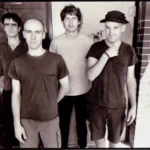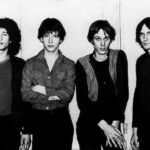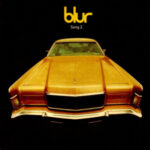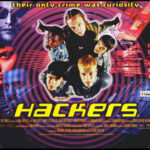The Mighty Mighty Bosstones stand out as pioneers of ska-core, a genre that blends ska, punk, and hardcore elements into a high-energy, horn-infused sound. Emerging from the Boston music scene in the late ’80s, the Bosstones, led by charismatic frontman Dicky Barrett, quickly became known for their infectious blend of ska rhythms, punk ethos, and socially conscious lyrics. This article delves into the band’s dynamic musical journey, their impact on the ska and punk scenes, and the enduring legacy of a group that continues to bring unity and energy to audiences worldwide.
The Mighty Mighty Bosstones, formed in 1983, took their name from a song by Jamaican ska legends the Skatalites. The original lineup featured Dicky Barrett (vocals), Joe Gittleman (bass), Nate Albert (guitar), Tim Bridewell (drums), Kevin Lenear (saxophone), and Tim Burton (saxophone). From the beginning, the band sought to create a distinct sound by fusing ska, punk, and hardcore elements.Their early albums, including “Devil’s Night Out” (1989) and “More Noise and Other Disturbances” (1992), showcased the Bosstones’ unique approach. With Barrett’s gravelly vocals leading the charge and a horn section adding a lively, ska-infused energy, the band carved out a niche in the alternative music scene. Tracks like “The Rascal King” and “Where’d You Go?” reflected the band’s ability to blend catchy melodies with socially conscious lyrics.
The Bosstones’ breakthrough came with their fifth studio album, “Don’t Know How to Party” (1993). The album marked a turning point in their career, with a more refined sound and a growing confidence in their ska-core identity. The title track, along with “Drunks and Children” and “Jump Through the Hoops,” demonstrated the band’s evolution and cemented their reputation as leaders of the ska-core movement.
Following the success of “Don’t Know How to Party,” the Bosstones continued to push musical boundaries with “Question the Answers” (1994). The album showcased a maturation of their sound, incorporating elements of alternative rock and maintaining the infectious energy that defined their earlier work. The track “Detroit Rock City,” a cover of the Kiss classic, became a standout moment, blending the Bosstones’ ska-core style with a nod to rock anthems.
The pinnacle of the Mighty Mighty Bosstones’ success came with the release of “Let’s Face It” (1997). The album catapulted the band into the mainstream, achieving commercial success and earning widespread acclaim. The single “The Impression That I Get” became an anthem of the late ’90s, blending infectious horns, Barrett’s distinct vocals, and a message of perseverance.“Let’s Face It” not only solidified the Bosstones’ place in the ska-core genre but also showcased their ability to craft universally appealing songs. The album’s accessibility without compromising their ska and punk roots made it a bridge between alternative and mainstream audiences. The Bosstones’ success with “The Impression That I Get” earned them a Grammy nomination and secured their position as influential figures in the alternative music scene.
At the heart of the Mighty Mighty Bosstones’ appeal is their commitment to ska-core, a genre they helped define. Ska-core combines the upbeat and danceable rhythms of ska with the raw energy and aggression of punk and hardcore. The Bosstones’ horn section, featuring saxophones and trombones, adds a distinctive layer to their sound, creating a sonic experience that is both invigorating and inclusive.The band’s punk ethos, characterized by DIY principles, community engagement, and socially conscious lyrics, aligns with the roots of punk rock. The Bosstones actively promote unity and inclusivity, encouraging their fans to come together as a diverse community. Their concerts, known for their energetic performances and spirited camaraderie, embody the spirit of ska-core and punk ideals.
While the Mighty Mighty Bosstones experienced some lineup changes over the years, including the departure of Nate Albert in 2000, their core sound remained intact. The band’s resilience and commitment to their ska-core roots allowed them to weather the shifts in the alternative music landscape. Subsequent albums, such as “Pay Attention” (2000) and “A Jackknife to a Swan” (2002), continued to showcase the Bosstones’ distinctive blend of ska, punk, and rock elements. The band’s consistency in delivering high-energy performances and staying true to their musical roots has endeared them to a loyal fanbase that spans generations. In 2007, after a brief hiatus, the Mighty Mighty Bosstones reunited to celebrate their 20th anniversary. The reunion was met with enthusiasm from fans, and the band continued to tour and release new material. The album “Pin Points and Gin Joints” (2009) demonstrated that the Bosstones could still deliver their signature ska-core sound with a contemporary edge. The Bosstones’ impact on the ska and punk scenes is evident in the ongoing success of their annual “Hometown Throwdown” concerts, a tradition that brings fans together for a multi-night celebration of music and community. The band’s ability to connect with audiences, both new and old, underscores their enduring relevance and the lasting impact of their ska-core legacy. The Mighty Mighty Bosstones stand as a testament to the power of ska-core, the enduring appeal of punk ethos, and the ability of music to unite diverse communities. From their early days in the Boston music scene to mainstream success with “Let’s Face It,” the Bosstones have consistently pushed boundaries and championed a sound that defies easy categorization. Their legacy extends beyond hit singles and commercial success; it’s embedded in the sense of community they’ve fostered, the energy of their live performances, and the influence they’ve had on subsequent generations of ska and punk-influenced bands. As the Mighty Mighty Bosstones continue to tour and release new music, their ska-core spirit remains undiminished, a testament to the enduring power of a band that continues to bring unity and energy to the world of alternative music.This post has already been read 222 times!










